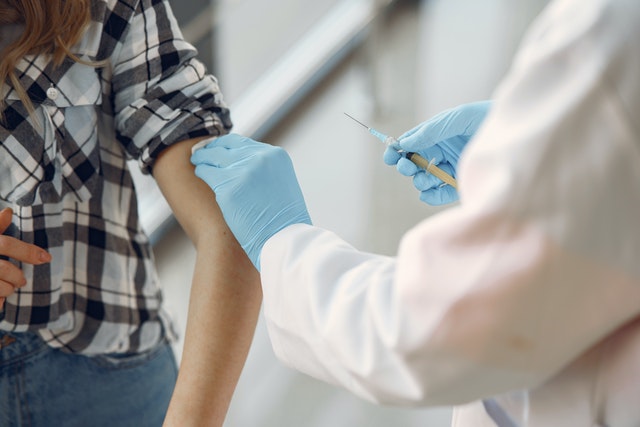A new analysis estimates the impact of COVID-19 vaccination on global rates of COVID-19-related mortality.
The development of vaccines for the SARS-CoV-2 virus was an integral part of the global pandemic response plan. Studies show that these are effective in preventing symptomatic COVID-19; for example, the Janssen Ad26.COV2.S vector vaccine for SARS-CoV-2 exhibited an efficacy of 76.7% in preventing severe COVID-19.3 With respect to the mRNA-based vaccines, the mRNA-1273 vaccine from Moderna and the bnt162b2 vaccine from Pfizer/BioNTech were 94.1% and 95% effective against preventing COVID-19, respectively.1,2
Although the findings of these studies are promising, vaccine accessibility is not consistent, and vaccination rates differ significantly between countries.4 Notably, one study found that, in October 2021, higher-income countries had an average vaccination rate of 125.3 vaccinations per 100 people, while the rates for lower-middle-income countries and lower-income countries were 45.3 and 4.2 percent, respectively.5 Ultimately, quantifying the positive impact of COVID-19 vaccination on a global scale is difficult, and this data is not well-established.
To address this gap, an analysis was performed to investigate the global impact of COVID-19 vaccination on related mortality rates by the end of 2021. The study also aimed to estimate the potential impacts that two different, yet more equitable, vaccine distribution models might have on these outcomes. The findings were published in The Lancet.4
Vaccination rates for each of the 185 countries included in the analysis were taken from both the Our World in Data registry and the World Health Organization (WHO) COVID-19 dashboard.4,6,7 Researchers also recorded the vaccine types known to be predominantly used in each country, as there are many SARS-CoV-2 vaccines with varying efficacies used worldwide.4
COVID-19-specific mortality rates in each country were recorded when possible. However, for countries where this data was not reported, these rates were calculated using a mathematical model published in The Economist.8 This model used an estimated proportion of reported all-cause excess mortality rates in 2021, and the proportion was estimated using official recorded COVID-19-related deaths from the Johns Hopkins University COVID-19 Data Repository.4,9 It is important to note that these mortality rates are a low estimate, given that any unreported COVID-19-related deaths would be excluded from this data.4
These COVID-19 mortality rates were compared with those in a theoretical scenario without COVID-19 vaccines, and this scenario was based on a framework from existing studies on COVID-19 transmission.4,10,11 These findings were then plotted against the previously described vaccination rates in each country to estimate the reduction in COVID-19-related mortality attributable to COVID-19 vaccination.
For the second part of the study, researchers used a similar mathematical model to estimate the effects of including the two equitable vaccine distribution plans. The first plan was meeting the WHO’s target of vaccinating 40% of the eligible population in each country by the end of 2021.4,7 The second plan was meeting COVAX’s target of vaccinating 20% of the eligible population in lower-income countries by the end of 2021.
The analysis estimated that vaccinations prevented between 14.4 million and 19.8 million COVID-19-related deaths globally between December 8, 2020, and December 8, 2021.4 Moreover, data revealed that the vaccination rates in 96 countries were below the WHO’s target of 40%. Finally, the analysis estimated that an additional 45% and 111% of COVID-19 related deaths could be averted in low-income countries if the COVAX’s 20% and WHO’s 40% targets were met, respectively.4
The results of this study suggest that the development and administration of SARS-CoV-2 vaccines were beneficial in reducing global COVID-19-related mortality. The results of the study also suggest that implementing the two equitable vaccine distribution plans would further decrease the mortality rate; however, more research is needed. Finally, the study highlights the inequitable access to these vaccines, and more research is needed to determine ways to address this issue.
References
- Polack, F.P., Thomas, S.J., Kitchin, N., et al (2020, December 31). Safety and Efficacy of the BNT162b2 mRNA COVID-19 vaccine. N Engl J Med 383: 2603-2615. Doi: 10.1056/NEJMoa2034577
- Baden, L.R., El Sahly, H.M., Essink, B., et al (2021, February 4). Efficacy and Safety of the mRNA-1273 SARS-CoV-2 vaccine. N Engl J Med 384:4030-416. Doi: 10.1056/NEJMoa2035389
- Sadoff, J., Gray, G., Vandebosch, A., et al (2021, June 10). Safety and Efficacy of Single-Dose Ad26.COV2.S Vaccine against COVID-19. N Engl J Med 384: 2187-2201. Doi: 10.1056/NEJMoa2101544
- Watson, O.J., Barnsley, G., Toor, J., et al (2022, June 23). Global impact of the first year of COVID-19 vaccination: a mathematical modelling study. The Lancet. Doi: 10.1016/S1473-3099(22)00320-6.
- Rydland, H.T., Friedman, J., Stringhini, S., et al (2022, February 23). The radiaclly unequal distribution of COVID-19 vaccinations: a predictable yet avoidable symptom of the fundamental causes of inequality. Humanities and Social Sciences Communications 9(61).
- Ritchie, H., Mathieu, E., Rodes-Guirao, L., et al (Updated 2022, July 1). Coronavirus Pandemic (COVID-19). Our World in Data. Accessed 2022, July 1, from https://ourworldindata.org/coronavirus
- World Health Organization (Updated 2022, July 1). WHO Coronavirus (COVID-19) Dashboard. World Health Organization. Accessed 2022, July 1, from https://covid19.who.int/
- The Economist (2021, November 2). The pandemic’s true death toll. The Economist. Accessed 2022, July 1, from https://www.economist.com/graphic-detail/coronavirus-excess-deaths-estimates
- The Johns Hopkins University of Medicine’s Coronavirus Resource Center (2022). COVID-19 Dashboard. Center for Systems Science and Engineering at Johns Hopkins University. Accessed 2022, July 1, from https://coronavirus.jhu.edu/map.html
- Hogan, A.B., Winskill, P., Watson, O.J., et al (2021). Within-country age-based prioritisation, global allocation, and public health impact of a vaccine against SARS-CoV-2: a mathematical modelling analysis. Vaccine 39: 2995-3006.
- Walker, P.G.T., Whittaker, C., Watson, O.J., et al (2020). The impact of COVID-19 and strategies for mitigation and suppression in low- and middle-income countries. Science 369: 413-422.
Photo by Gustavo Fring at Pexels



